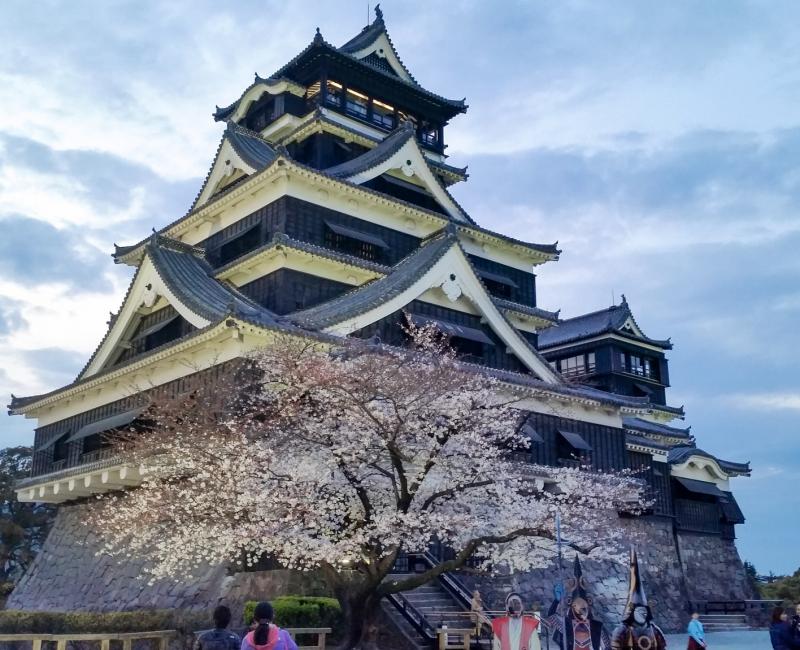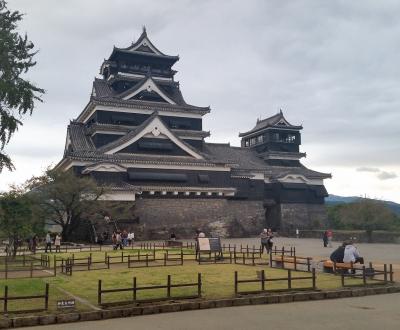Kumamoto Castle
The Wonderful Samurais’ Fortress
Kumamoto Castle is a fortified monument located in the eponymous city on Kyushu Island in Japan. With its vast park and many historical buildings, it is one of the most comprehensive castles available to visit in Japan. The main keep was partially renovated in 1960, then damaged by April 2016 earthquakes and is now open to the public again since June 2021.
The castle was partially damaged by 2016 Kumamoto earthquakes (foreshock on April 14 and subsequent shocks up to a 7,3 magnitude). The Castle's official Facebook page gives updates on the renovation works and posts pictures. Renovation costs amount to ¥60M (~US$387,812).
Full reopening is scheduled in 2052.
Not far from Kamitori and Shimotori, the main shopping streets in downtown Kumamoto, and in front of the city hall, Kumamoto Castle 🏯 embodies the definition of Japanese post 📮-modernism.
Impressive dimensions
First, the castle is of an impressive size. It was built on the top of a hill and walking slopes along the ramparts are necessary to reach its foot. The keep is 30 meters height and from up there, the city surrounded by mountains seems to fit in the palm of the hand. As for the castle’s grounds, its dimensions extend on 1,6km from east to west and 1,2km from north to south. It is lined up with many green spaces and cherry trees 🌸, which make it the ideal place for hanami celebration (the viewing of cherry blossoms) and it is one of the most appreciated castle for this springtime activity.
A complex history
Kumamoto Castle’s first fortifications were laid out during the second half of the 15th century, but they were fully developed between the end of Azuchi-Momoyama period (1558 - 1600) and the beginning of Edo period (1603 - 1868). The main keep’s construction was completed in 1600 and the domain was transferred to feudal lord Katô Kiyomasa after the Battle of Sekigahara. Until 1607, he proceeded to extend the castle, with the construction of a smaller tower and a well, then in 1610 Honmaru Goten palace. After his death in 1611, Katô’s son Tadahiro could not resist to power rivalries as he inherited at a young age, and the domain was finally transferred under the authority of the Hosokawa clan in 1632.

More than 200 years later, the Restoration of Emperor Meiji opened a new period of wars, starting in 1870, with several revolutionary movements striving to end civil wars and extravagances. In the meantime, the newly reinstated imperial rule abolished the fief system. After several years of political unrest, the castle was besieged during the Satsuma rebellion (1877), and several parts of the construction, including the main keep, were burnt down.
A modern keep
However, it was only from 1960 that reconstruction of Kumamoto Castle was undertaken, starting from the keep. Then the rest of the fortifications and miscellaneous buildings were restored between 1998 and 2008.
Kumamoto Castle is now a museum displaying in details the fief’s history, with some impressive artworks exhibited. Tourists come to take pictures with the samurais hidden in the keep. The plaza opening in front of the main building is an immense playground for children. At the back, food stalls sell delicacies made from sweet potato 🍠, to enjoy while walking in the street lined up with red lanterns 🏮 at the exit from the former stronghold.
At night, the castle and its hill are illuminated to highlight the construction’s wonderful black and white contrasts.
Damages from 2016 Kumamoto Earthquakes
In 2016, Kumamoto Castle was severely damaged by the earthquakes that occurred on April 14th and their aftershocks, some even striking at a 7,3 magnitude. In 2018, the city’s restoration program scheduled the end of the reparation works by 2037.
However, a new study in late November 2022 rather estimates the full reopening of the site in 2052, that is to say 15 years later than initially planned! The delay is partly due to the need of assessing the appropriate reconstruction method to use on the fortification walls.
In the meantime, the site is gradually reopening following the restoration works’ advance and the main keep Tenshukaku has been reopened to the public since summer 2021.

